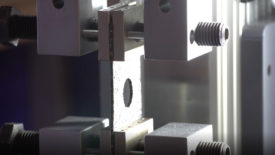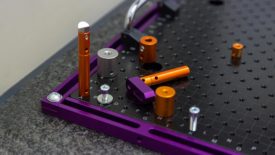Articles by Genevieve Diesing
NDT | Magnetic Particle Inspection
While magnetic particle inspection techniques have stood the test of time, the equipment involved has seen updates to keep up with demand, experts say.
Read More
Test & Inspection
How a Shrinking Workforce Affects Testing and Inspection in NDT
As the pandemic and advances in technology impact the field, education and training remain paramount — especially for newcomers.
December 30, 2022
Management
The Enduring Importance Of Quality Standards
Some benefits of quality standards are obvious, while others don't get enough fanfare. The pandemic may have impacted how these standards are implemented.
December 2, 2022
Manufacturing Skills Gap
COVID Has Not Helped the Skills Gap
Training programs paused during the pandemic, but manufacturers are upping their game to attract workers.
November 1, 2022
Lean Manufacturing
Why Lean Principles Stand The Test of Time
Although contexts and technologies change, waste categories are timeless.
October 3, 2022
Management
Why Continuous Improvement Matters
Having an improvement program is not as useful as having an improvement culture.
September 8, 2022
Management
Why Quality Certifications Matter
Accreditation is critical to ensuring there is an effective quality management system that affords greater process control, reduces risk, and ulitmately results in increased customer satisfaction. And, thanks to the pandemic, it got a little easier.
August 8, 2022
Aerospace | Leak Testing
The How’s and Why’s of Leak Testing
In the aerospace field, old leak testing methods are replaced to improve efficiency and minimize time on the ground.
July 8, 2022
NDT | Fatigue Testing
The Future of Fatigue Testing
Newer techniques are on the rise. As manufacturing evolves, so too does fatigue testing.
June 8, 2022
Quality 101
Fixturing 101: Crucial For Quality
Inspection data is critical to delivering perfect parts faster, experts say.
May 8, 2022
Stay in the know with Quality’s comprehensive coverage of
the manufacturing and metrology industries.
eNewsletter | Website | eMagazine
JOIN TODAY!Copyright ©2024. All Rights Reserved BNP Media.
Design, CMS, Hosting & Web Development :: ePublishing









